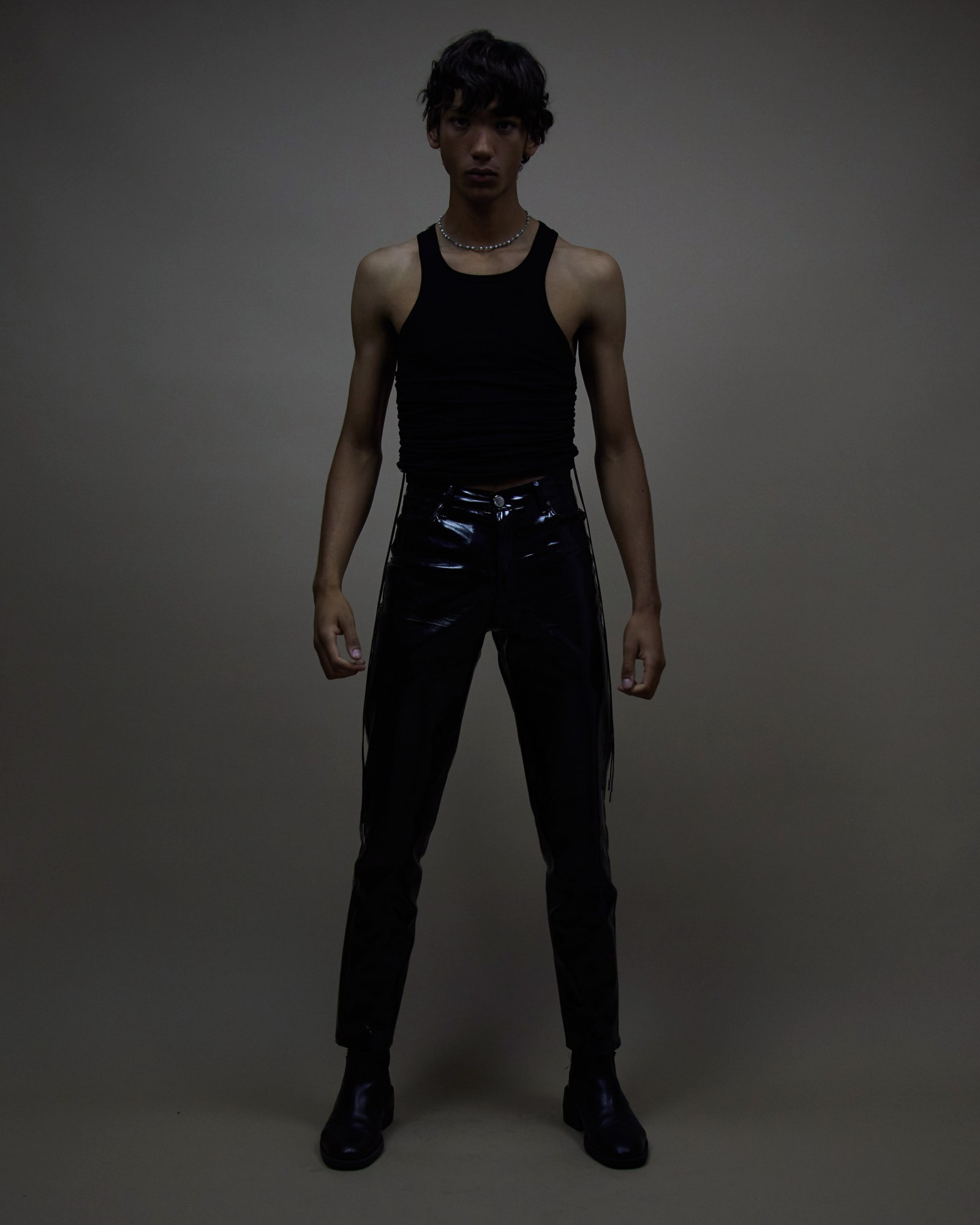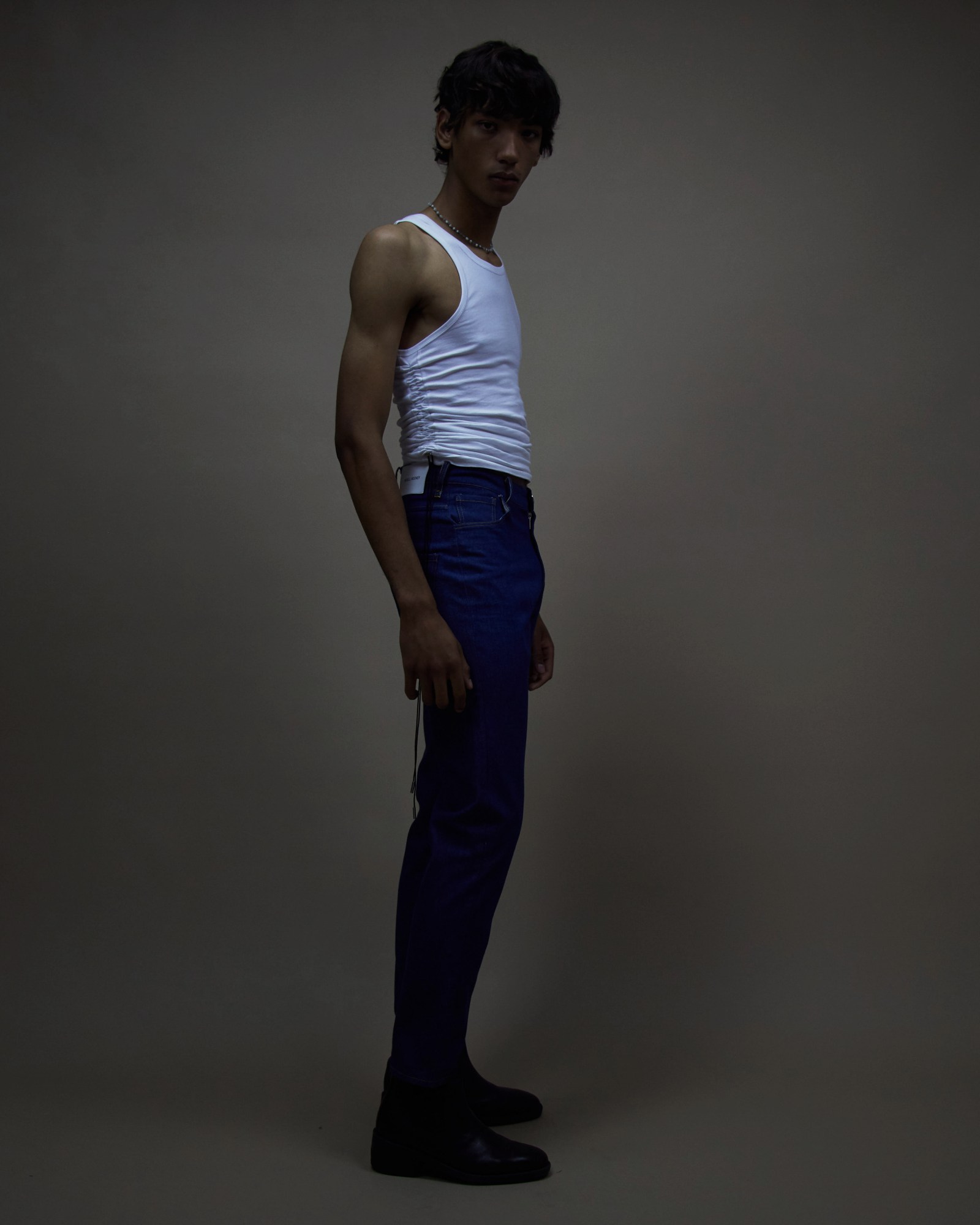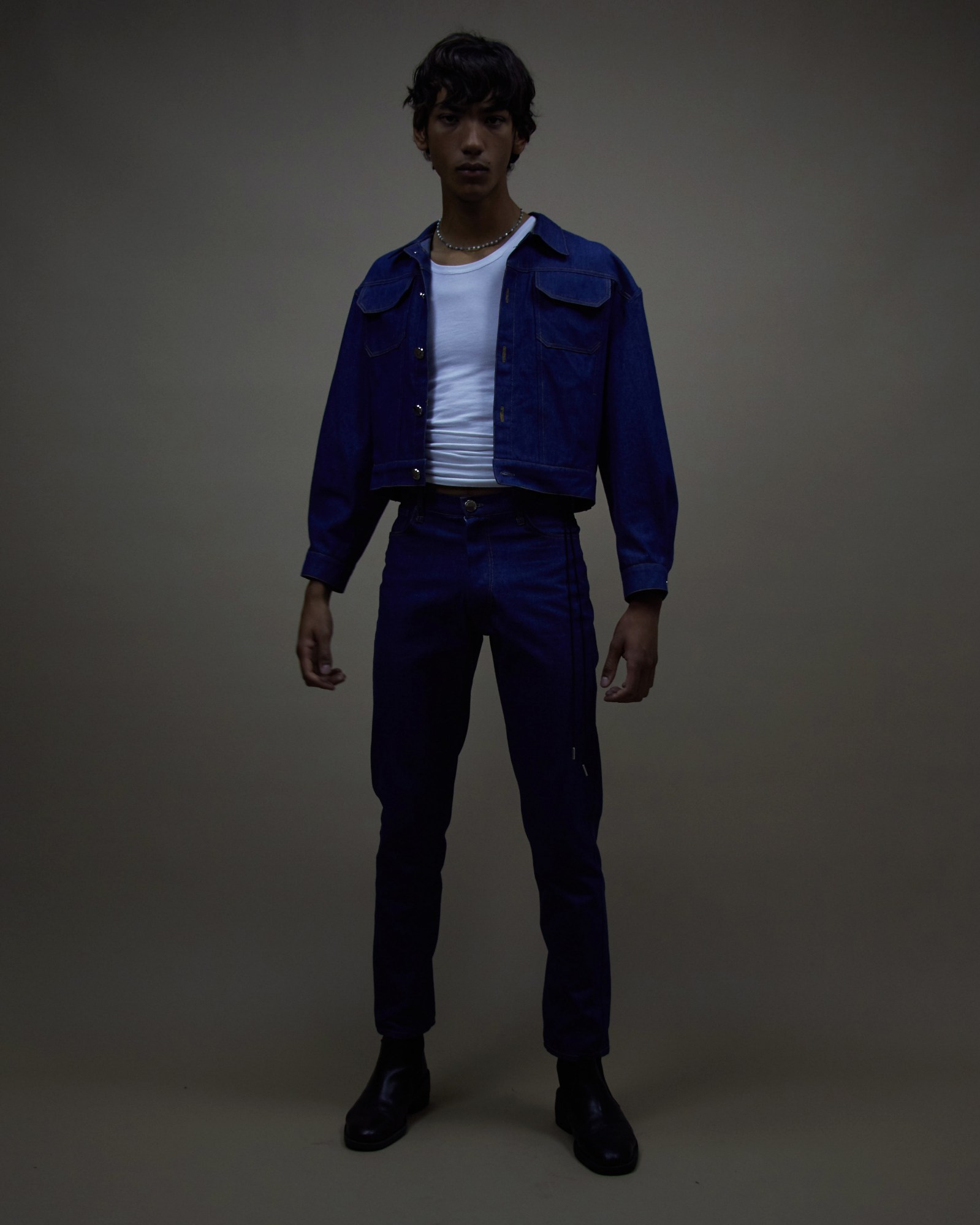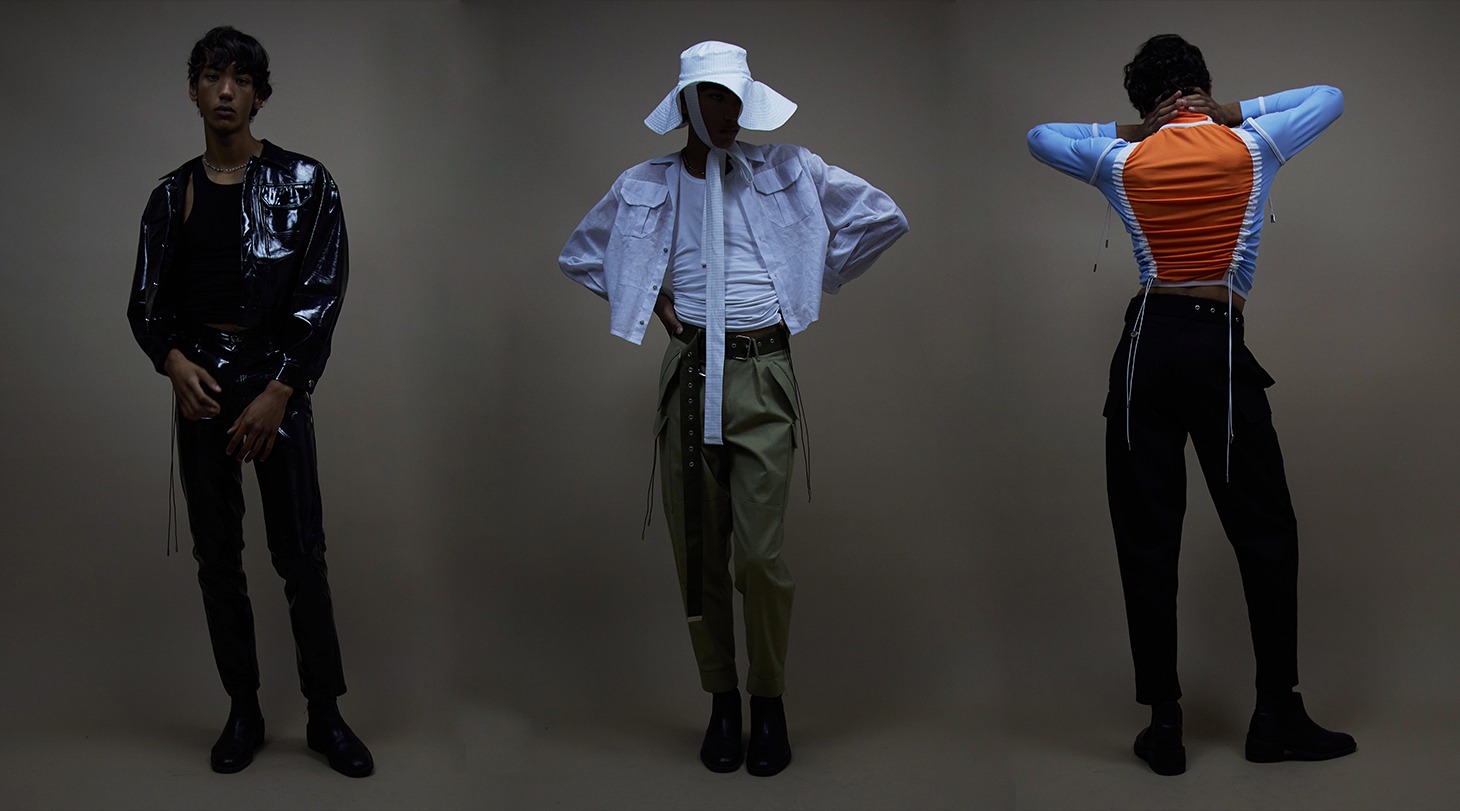In 2017, designer Rory Parnell Mooney found himself at a crossroads. Despite having produced a series of opulent, goth-inflected collections as part of Fashion East’s menswear line-up that were achieving rapidly growing interest, after much deliberation, he made the difficult decision to press pause. “When I graduated, I thought: I want to launch my label, and I want to do it now,” says Rory. “If anything, I wish I’d taken a couple of years between graduating and doing Fashion East to really understand what I was about.”
Now, two years after leaving Fashion East, Rory is finally ready to launch his own label in earnest — now titled simply Parnell Mooney — and, more importantly, to figure out what it was he hoped to bring to the crowded table of London menswear. “I just wanted to see what it’s like to have a normal life and make some money,” he says, referring to his past two years largely spent teaching at both Central Saint Martins and the London College of Fashion. “I think I needed that time to realise that staying grounded and running a fashion label don’t have to be mutually exclusive: that I could take control of it, and it didn’t need to be this horrible, all-encompassing thing that you’re constantly stressing over.”
With this in mind, Rory leased a new studio space last summer within a rabbit warren of an industrial building in Stratford, before setting about refurbishing the space to become a blank slate for building a new collection. With this creative isolation came an unexpected, newfound playfulness. “I work pretty much on my own, so I’m in this room by myself making all the decisions, but it’s actually really nice. I had interns before, so there were lots of people seeing all of the mistakes. I feel a bit freer to make mistakes now because I can spot them before anybody else sees it.”
These happy accidents form the backbone of a collection that became a study in opposites: from the innocent sweetness of airy gingham blouses and jackets laced with elegant bows; to the jackets cut in gorgeously glossy moiré silk; to the ring pulls, cropped tank tops and wipe-clean leather that carry an air of something more perverse. “That was actually a nod to the Al Pacino film Cruising. I remember when I was doing my MA course, Louise [Wilson, the late course leader] made me watch part of it in her office with her, and I was like, why is this happening, it was very strange,” says Rory, laughing. “But it’s this funny reference that I’ve been playing with in my head for a while.”

Despite these more specific references to the history of gay cruising (note also the bandanas hanging from cross-body bags, as a tip of the hat to the hanky code), Rory is keen to emphasise that his new focus is on making a full cross-section of a wardrobe packed with solid, reliable clothes, rather than anything too high-minded or conceptual. “There are a bunch of shirts in the collection that were inspired by this old military shirt I bought in a charity shop years ago, but I’ve always loved and held on to,” he explains. “It’s a little bit less about building a concept, it was much more about, oh this shirt could look nice like this, or this weird combination of checked fabrics could look nice. It’s all just been a bit freer.
“It was quite important for me to get a lot of wearable stuff in there. And then also maybe have some stuff that feels like an almost elevated wearability, if that makes sense. So there’s everyday stuff but then there are pieces that feel a bit more special, like the tops with the drawstrings, which are almost clubwear. But they also could also be worn with a shirt on top and be quite normal.” It’s a smart approach to building a brand that speaks both of Rory’s time out in the real world, and his perspective as a designer making work that isn’t attempting to fulfil anyone else’s agenda — instead, he’s confident enough now to do things entirely on his own terms.

It’s an attitude that also trickles down to how he’s choosing to present the first season of the brand. It could have been a splashy return with a big runway show, but given the tactile, personal process of putting the collection together, Rory insists that wouldn’t have felt right. “The idea of a runway show wouldn’t work at the moment. I wanted it all to be looked at and touched, to have a day in London where people can come and look at the clothes and try things on, to build a bit more of a relationship with the clothes rather than just a five minute catwalk show, you know?” Thankfully, the clothes themselves are so desirable you can’t help but imagine an immediate relationship with them. And with Rory’s nods to the seamier corners of the history of menswear, it might even be an illicit one.

Credits
Photography Julia Monsell
